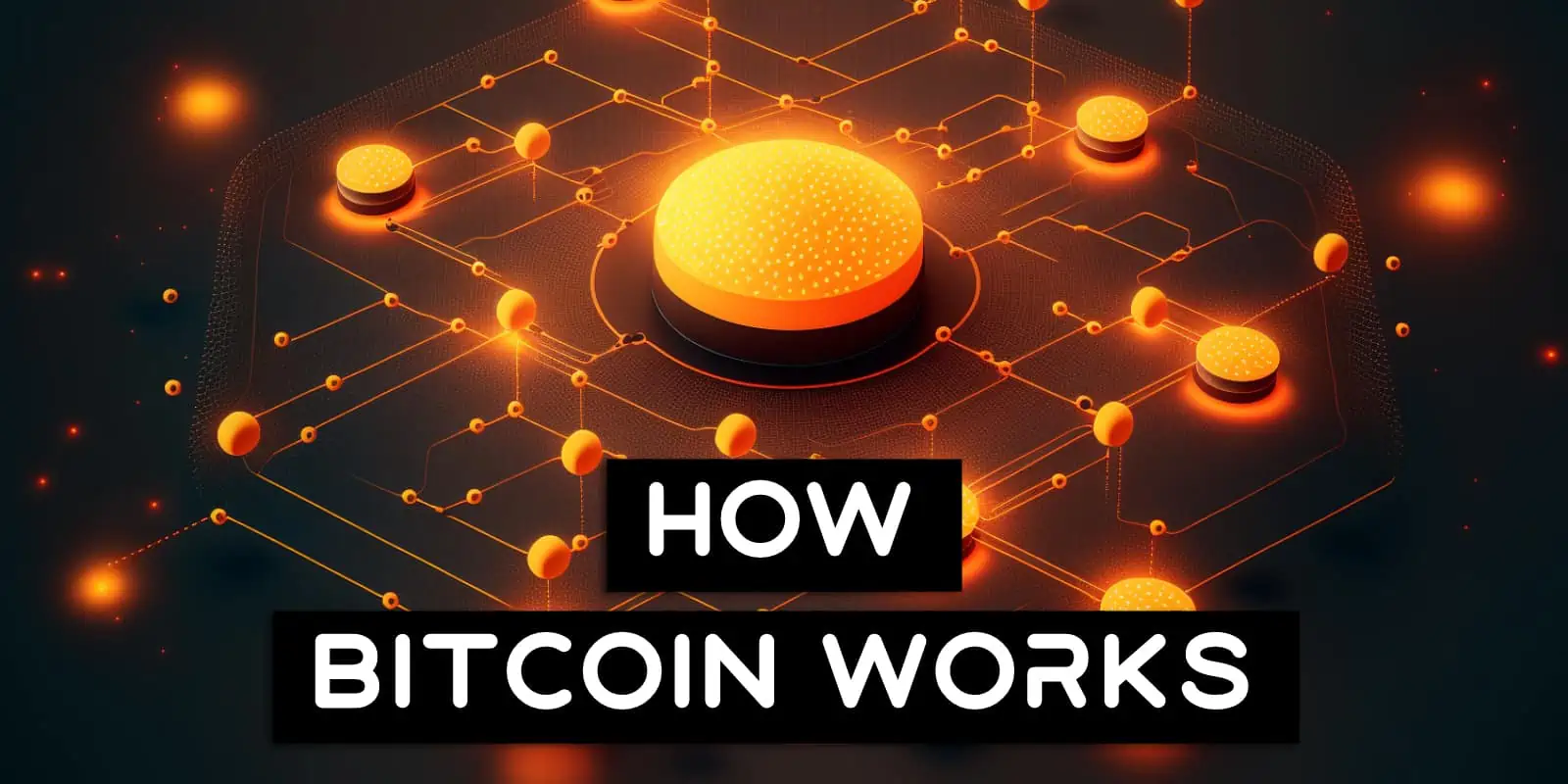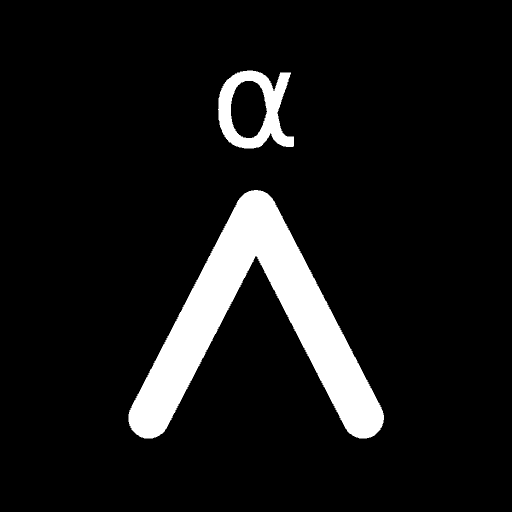Welcome fren! We’re experts solely focused on Bitcoin here which is why our first piece was a 5,000+ word What Is A Bitcoin? guide that goes deep into the core tech. But. We also understand that people now have the attention span of a crack addicted squirrel or just might not have the time to read all that.
So today we’re breaking it down like you’re 5. How does Bitcoin work for dummies is a super simple guide that’s technically precise, yet explains everything so quickly you can read it in under 4 minutes.
Contents
What Is Bitcoin (BTC)?
So what exactly is Bitcoin? Bitcoin is the first and most globally recognized cryptocurrency. It is a free, fully open source, decentralized and entirely digital currency for all.
OK explain Bitcoin to me like I’m 5: Bitcoin is online money that enables instant payments. Free for anyone, anywhere in the world to use at any time. It uses peer-to-peer technology (like torrents) and can be used without any permission from a government or central authority. It cannot be stopped or censored. Its rules cannot be changed, no matter how rich or powerful a country or person is.
Created by cryptographers (Cypherpunks technically) to cure the money problems caused by big governments and big banks it joins their other world changing technologies such as encryption of the Internet, encrypted messaging and the Tor project.
Some basic properties of Bitcoin:
- Limited Supply: There will only ever be 21 million bitcoins
- Distributed: All transactions are stored on thousands of computers all across the world
- Always Open: Unlike legacy banks, you can buy, sell, send or receive it globally, 24/7/365
- Transparent: The Bitcoin Blockchain is public and viewable to anyone world wide
- Peer-To-Peer: No banks are involved, transactions go from one person to the other
- Permissionless: It can be used without having to ask anyone for permission
- Censorship Resistant: You’d have to stop the Internet to stop it
- Easily Divisible: 1 BTC can be divided into 100 million pieces called “Satoshi”
- Protected: The worlds biggest supercomputer made up of miners protect every Bitcoin
- Final Settlement: Bitcoin transactions, once confirmed in a block are irreversible
- Pseudo-Anonymous: There are no names or accounts. It should be noted that it’s still possible to link Bitcoin addresses to real life names if care is not taken to protect your Bitcoin Privacy
When Was Bitcoin Created?
Satoshi Nakamoto released the famous Bitcoin Whitepaper in October of 2008. On the 3rd of January, 2009 the first Bitcoin block was mined, called the “genesis block” or Block 0. They continued working on the project with other developers until 2010 when they left the project. You can get more details about the creation of Bitcoin in our piece When Did Bitcoins Start?
Who Owns / Runs / Controls Bitcoin?
No one owns, runs or controls Bitcoin.
While someone (or multiple someones) under the pseudonym Satoshi Nakamoto were the ones who originally invented Bitcoin by publishing the whitepaper for it, no one, not even Satoshi, owns, runs or controls it.
How Does Bitcoin Work For Dummies
Bitcoin vs bitcoin vs Bitcoin
The first thing to know is that there isn’t just one component to “Bitcoin”. This can confuse a lot of people, but it’s not terribly complicated. There are three different parts that make up the whole system:
- The Bitcoin Network: This is the physical network made up of all the nodes (computers) that communicate to each other all around the world.
- The bitcoin Cryptocurrency: This is the actual cryptocurrency or “coin” of the Bitcoin Network, which is called bitcoin (BTC). Note it has a lower case “b”.
- The Bitcoin Blockchain: This is the ledger or database that contains the entire history of all Bitcoin transactions right back to 2009.
New to Athena Alpha? Start today!
The Bitcoin Network
The Bitcoin Network is made up of computers. These computers all run the same piece of software (called Bitcoin Core) and are connected to each other in a peer-to-peer (P2P) network.
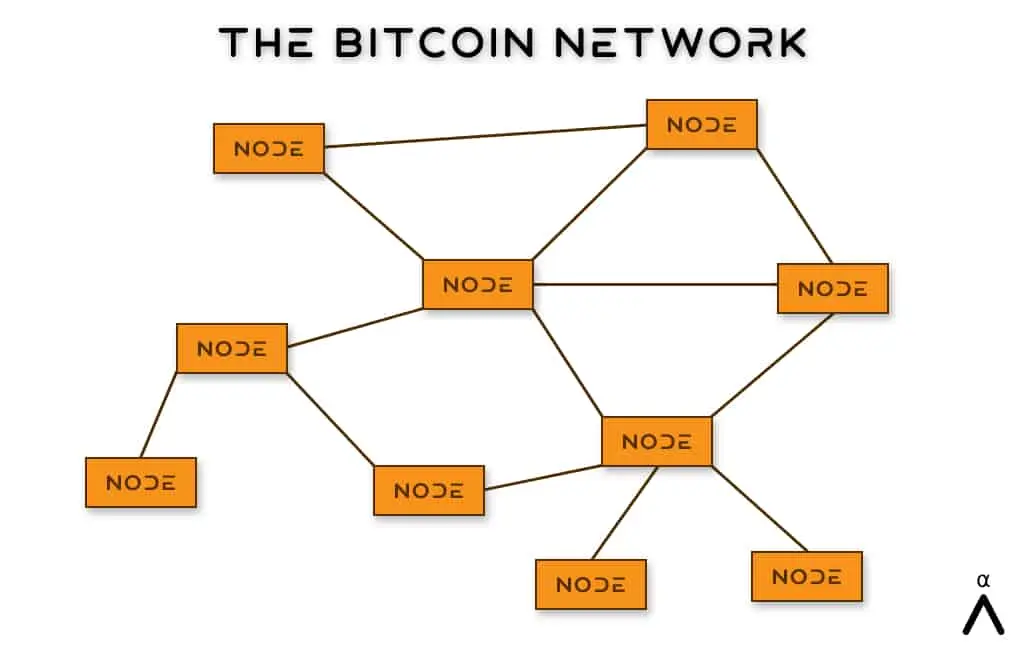
A peer-to-peer network simply means that the computers are connected to each other (the “network” part) and that all of them are equally privileged (they are peers) with no “master” computer controlling them. There are many types of peer-to-peer networks such as Bittorrent.
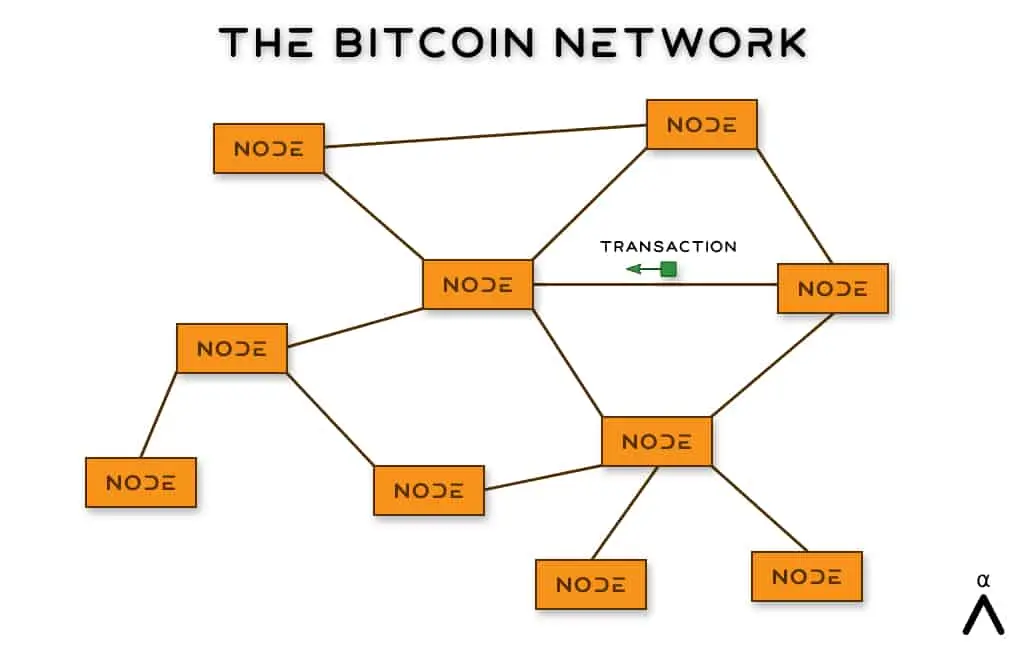
Each one of these computers runs the Bitcoin Core software and communicate by broadcasting digitally signed transactions. These transactions are shared and forwarded on between all peers so that they are all up to date.
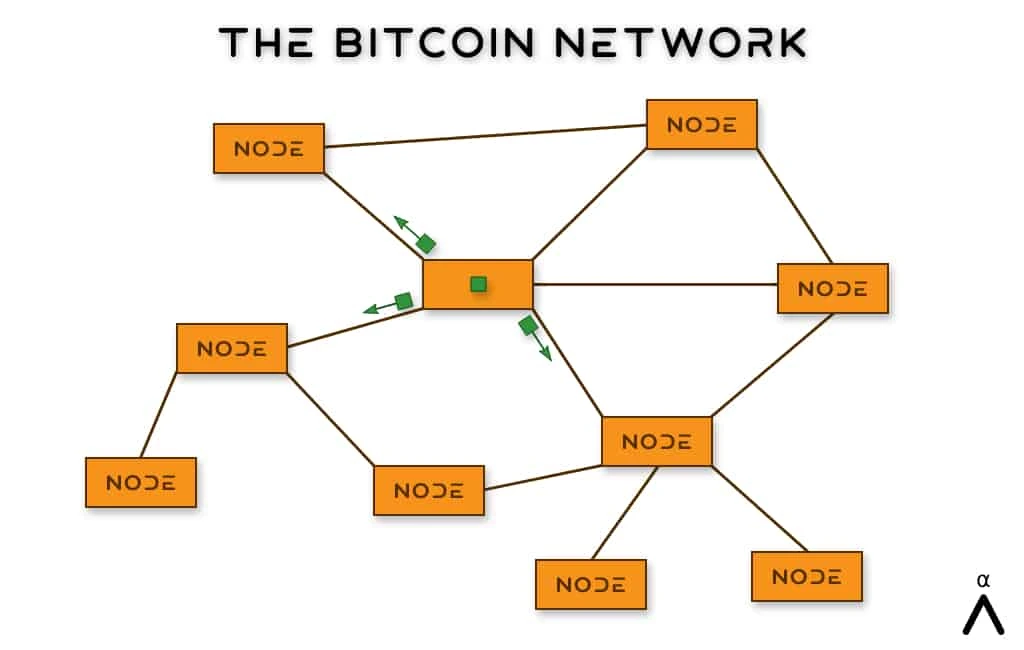
Each of these computers running Bitcoin Core is referred to as a Node. If they also have a full copy of the Bitcoin blockchain stored on them they are then called a Full Bitcoin Node. While you can run your own Bitcoin Full Node, it isn’t required to Send Bitcoin.
There is another important type of computer that makes up the Bitcoin Network which are called miners. You can read all about this in our super in depth piece What Is Bitcoin Mining?
Bitcoin’s Blockchain Technology
Bitcoin keeps track of who owns what bitcoins with a ledger called the blockchain. This is a new technology that completely takes humans out of the equation. This ensures there is no abuse of this power.
When a transaction is broadcast and ownership of various bitcoins change hands, it’s bundled together into a “block”. This block is then added or “chained” onto all the existing ones. All these individual blocks, chained together form the blockchain which is stored on all Bitcoin Full Nodes. For further reading on this, check out What’s The Difference Between Bitcoin And Blockchain?
How Is Bitcoin Used?
Bitcoin, just like the Internet, becomes much more than its parts when scaled up thanks to the Network Effect. It allows people to transfer value online without any bank in between. A simple idea, but one that quickly enables a host of world changing capabilities that we’ve never had access to before such as:
- Store monetary value over time
- Store monetary value without anyone’s permission
- Store monetary value beyond the reach of a government
- Send money globally instantly and cheaply
- Send free and instant Remittance
- Transact without being banned
- Take your wealth with you when fleeing a country
You can also spend your bitcoins at hundreds of thousands of stores, resorts, online websites and more. For a full list have a look at What Can You Do With Bitcoin?
FAQ
Who Owns The Most Bitcoin?
The creator(s) of Bitcoin, Satoshi Nakamoto, is likely the biggest single entity holder of bitcoins as it’s believed that they hold over 1 million bitcoins. Other entities that are know to hold over 1 million bitcoins are the largest exchanges: Huobi, Binance and Bitfinex.
Is There A Transaction Fee On Bitcoin?
Bitcoin Mining is the process of adding transactions to the Bitcoin blockchain. To perform this mining process a miner needs to expend a lot of computer processing power or “work” which costs money. As such, each Bitcoin transaction usually requires a fee (paid in bitcoins) to process it.
Read more: Bitcoin Transaction Fees
How Many Bitcoins Are Left?
Over 19.6 million bitcoins have already been minted. Given the hard cap of 21 million bitcoins, this means there’s only around 1.4 million bitcoins left to be minted. For the most up to date figure check out our How Many Bitcoins Are There page that gives real time, detailed amounts on the Bitcoin supply.

